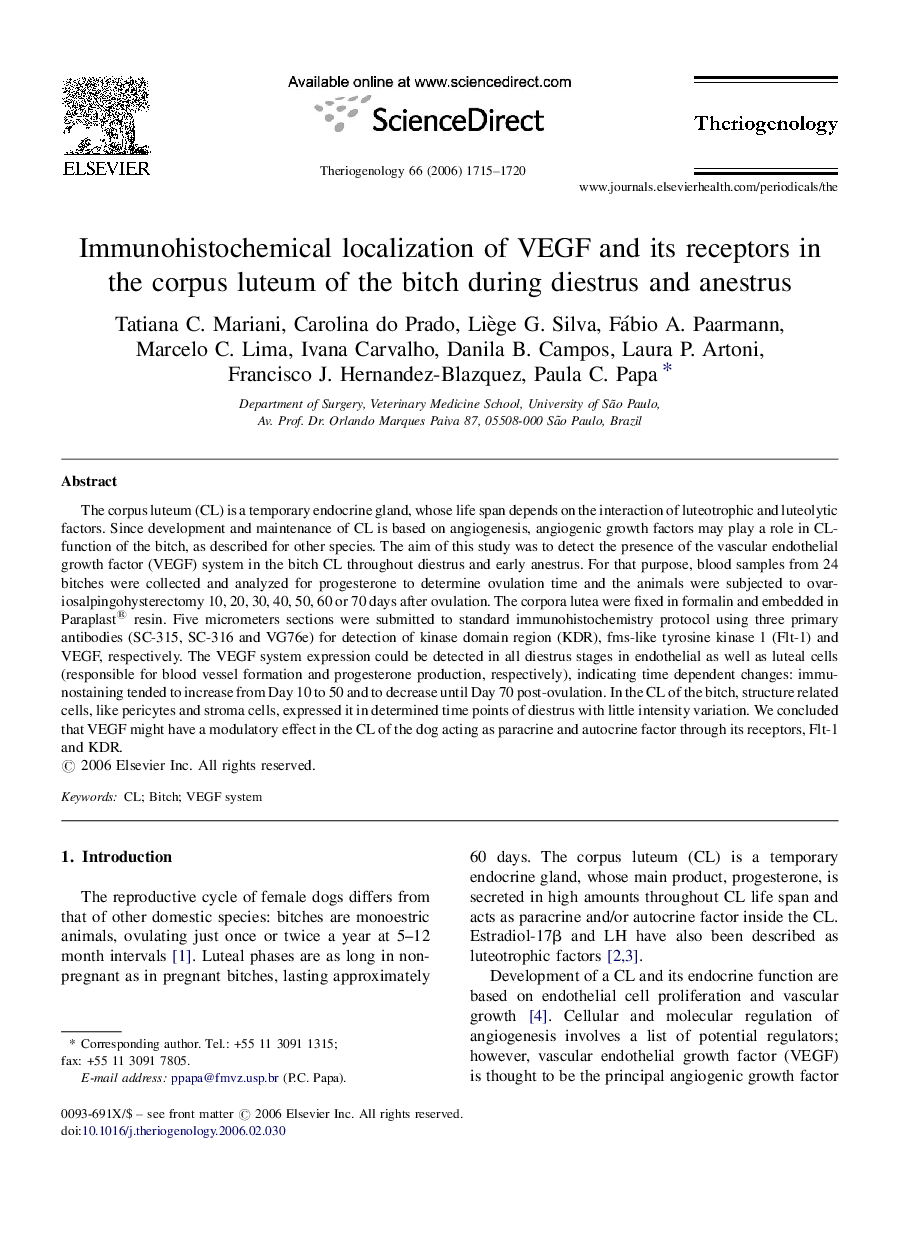| کد مقاله | کد نشریه | سال انتشار | مقاله انگلیسی | نسخه تمام متن |
|---|---|---|---|---|
| 2096780 | 1546085 | 2006 | 6 صفحه PDF | دانلود رایگان |

The corpus luteum (CL) is a temporary endocrine gland, whose life span depends on the interaction of luteotrophic and luteolytic factors. Since development and maintenance of CL is based on angiogenesis, angiogenic growth factors may play a role in CL-function of the bitch, as described for other species. The aim of this study was to detect the presence of the vascular endothelial growth factor (VEGF) system in the bitch CL throughout diestrus and early anestrus. For that purpose, blood samples from 24 bitches were collected and analyzed for progesterone to determine ovulation time and the animals were subjected to ovariosalpingohysterectomy 10, 20, 30, 40, 50, 60 or 70 days after ovulation. The corpora lutea were fixed in formalin and embedded in Paraplast® resin. Five micrometers sections were submitted to standard immunohistochemistry protocol using three primary antibodies (SC-315, SC-316 and VG76e) for detection of kinase domain region (KDR), fms-like tyrosine kinase 1 (Flt-1) and VEGF, respectively. The VEGF system expression could be detected in all diestrus stages in endothelial as well as luteal cells (responsible for blood vessel formation and progesterone production, respectively), indicating time dependent changes: immunostaining tended to increase from Day 10 to 50 and to decrease until Day 70 post-ovulation. In the CL of the bitch, structure related cells, like pericytes and stroma cells, expressed it in determined time points of diestrus with little intensity variation. We concluded that VEGF might have a modulatory effect in the CL of the dog acting as paracrine and autocrine factor through its receptors, Flt-1 and KDR.
Journal: Theriogenology - Volume 66, Issues 6–7, October 2006, Pages 1715–1720